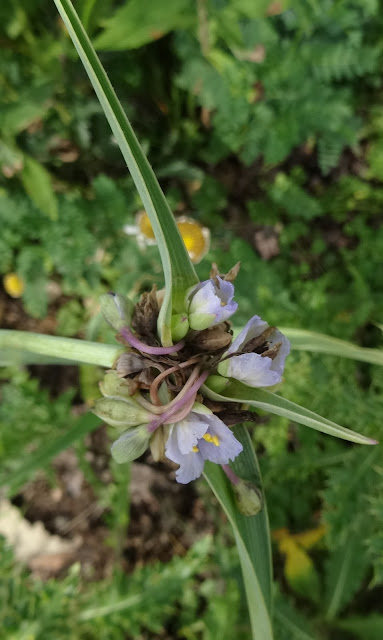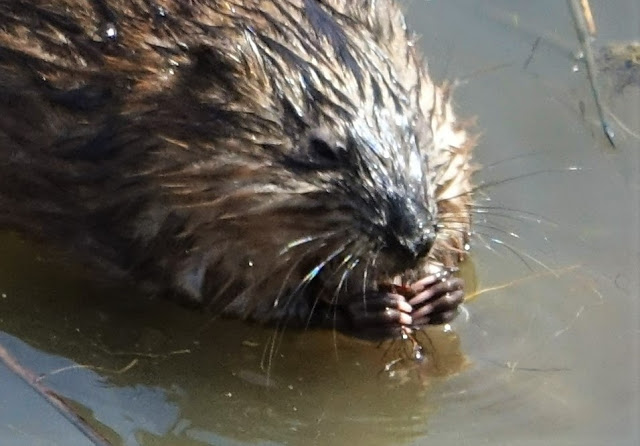Often we can see a muskrat swimming back and forth in the pond, harvesting plants and taking food home to the family. Muskrats Ondatra zibethica eat the roots, stems, leaves, and fruits of many water plants such as cattail, rushes, smartweed, duck potato, horsetail, sedges, and willow sprouts. They are strong swimmers due to their two long back feet and five webbed toes. For grasping and harvesting food, they have developed smaller front feet with four fingers with claws and a small thumb. By living near the pond, muskrats control plant growth, provide open spaces for new plants to grow, and make space for other animals to build their nests.




